
Forget the stigma and shame. Financial expert Bruce Sellery helps you understand bankruptcy and how to decide whether it's the right decision for your family...
- Subject:
- Business
- Financial Literacy
- Material Type:
- Activity/Lab
- Date Added:
- 02/26/2024

Forget the stigma and shame. Financial expert Bruce Sellery helps you understand bankruptcy and how to decide whether it's the right decision for your family...

The material in this lesson will help students become aware of the warning signs of financial difficulties. When difficulties arise, students should first contact their creditors. Next, efforts should be made to revise spending patterns. In addition, assistance from a Credit Counseling service agencies might be considered. What if these actions do not help?

This collection features resources to support teaching Module 26B: Handling Debt Problems B from the Saskatchewan Financial Literacy curriculum. This activity suggests articles, websites, assignments, and discussion topics to help develop some problem-solving skills in relation to managing debt problems.
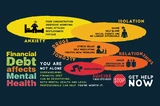
There are several interesting articles written by Anne Gaviola on Vice focused on Canadian finances, debt, and correlations between money and a person’s well-being. Keeping your debt a secret can mess with your mind and body. The culture of secrecy around debt causes young people to suffer in silence, making it even harder to manage debt. Use this content for case-based learning opportunities.
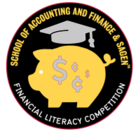
This is an online lesson with built in quizzes, videos and explanations. Students can use this to supplement the learnng happening in the classroom on the credit card unit. Topics covered include: How do credit cards work?When should you use a credit card?Credit Card TerminologyWhat are some factors to consider when choosing a credit card?What are the costs of using a credit card?What are credit scores and how can you build your credit score?There is also a mini case activity included at the end with questions and feedback for the student.
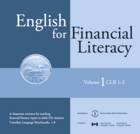
The main objective of English for Financial Literacy is to help instructors incorporate financial literacy content into their program planning and teaching, and support them in learning about key topics and concepts related to financial matters. The activities in this section explore the topic of banking services, credit cards, types of credit and related concepts. The activities present basic information on various bank accounts and transactions, forms of credit, what good and bad credit is, and how credit cards work. English for Financial Literacy is an instructor’s resource for teaching financial literacy concepts and skills in LINC and adult ESL programs at CLB levels 1 to 8.

Coffee roaster and entrepreneur Paul Foster shares his earliest childhood memories about money and an early job at the bank seeing how customers manage their debt. These experiences shaped his financial future. Students will review three different video segments on being an entrepreneur, advice on debt and long term impact of loans, especially when you are self-employed. The activities include multiple choice, vocabulary, short answer and open ended questions giving the students an opportunity to review advice on being an entrepreneur, managing your debt and how this will benefit your future.Chapter 1 Childhood memories about money and being an entrepreneur video: https://www.youtube.com/watch?v=trBgl4tH6vU Chapter 2 Dealing with debt video: https://www.youtube.com/watch?v=b22pGQFMQpM Chapter 3 Paying off student loans video: https://www.youtube.com/watch?v=syoXqBo9IFA

In this Case Study, students will take on the role of a credit counselor to assist a borrower who finds himself in serious financial distress. Several options will be presented, and students will identify pros and cons of each approach and choose a path forward.

Managing debt loads can be very difficult and overwhelming at times. Hiding from debt and avoiding the problem, will only make the situation worse. This activity includes mini case studies on how to handle various debt problems so that the students can take control of their debt and move forward to a better financial future.

FL10.8 Analyze credit options and the importance of responsible borrowing. Title: “Is There Such a Thing as Good Debt?” Listening Guide and Video. Some say that debt is the gateway to your goals, others say it's a ball and chain that will drag you down... So who's right?

“The Dark Side of Buy Now Pay Later (BNPL) Apps” Video and Listening Guide Two Cents Video: https://youtu.be/UFJgnaASld8?si=ZlyKa6W0f4mq5gZj Buy Now Pay Later loans are becoming the newest, trendiest way to spend money you don't have... but are they really safer than credit cards? Preet Banjeree Video: https://youtu.be/fYM0eLvds1g?si=kNPU8bSCaAfp_0Br There are no free lunches. Find out how expensive it is to offer (for a merchant), how that can increase prices, and how using other methods to pay might be better for you (and also for lower income households!)

This content contains grade level Personal Finance Case Studies, resources to help teachers teach, helpful guides for teachers to write their own case studies and sample case presentations and videos of past students. These are great resources to enhance your teachings, use as projects or year end assignments and to prepare students for case based instruction in their future post secondary or at case competitions.

Students will learn the consequences of not paying one’s debts and the choices of last resort for out-of-control debt. Students will explain how using [types of predatory loans] can cause a vicious cycle of debt. Bankruptcy is also introduced, and the various costs associated with bankruptcy are outlined. The students will discover what steps a person can take to avoid filing for bankruptcy, including seeing a credit counselor.

Comic Book titled “The Game Plan” by The Healthy Aboriginal Network https://istorystudio.com/wp-content/uploads/2014/04/Game-Plan.pdf The Healthy Aboriginal Network’s Game Plan is a comic book for Aboriginal youth featuring a teenager named Jake who struggled with financial wellbeing until he was taught a lesson or two in financial literacy. Making the right financial decisions helped Jake achieve his goals and feel financially empowered.
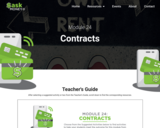
Examine the components and legalities of financial contracts.
Teacher Guide included.
3-5 hours

This activity allows the students to discuss the burden of student loans and financing post-secondary education. An additional aspect to this activity is the mental health aspect regarding heavy debt loads for post-secondary. The discussion could include a debate on student loans, who is responsible and can a student "walk away" from this debt? Should the government pay for post-secondary education for everyone? If yes, would you be willing to pay more taxes for free post-secondary education?Students often finance their post-secondary education, which can be very expensive over many years. How does a student pay this debt back if they are unable to finish their program, especially in expensive programs such as medicine or law?
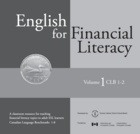
English for Financial Literacy is an instructor’s resource for teaching financial literacy concepts and skills in LINC and adult ESL programs at CLB levels 1 to 8. The main objective of English for Financial Literacy is to help instructors incorporate financial literacy content into their program planning and teaching, and support them in learning about key topics and concepts related to financial matters.Full workbooks and audio files accompany this resource.

This 12-minute video lesson takes a look at the institutions involved in processing your credit card and how they relate to each other. [Core Finance playlist: Lesson 61 of 184]

This 16-minute video lesson provides detailed analysis of the rent vs. buy decision. [Core Finance playlist: Lesson 12 of 184]
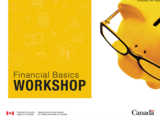
Financial Basics is a workshop designed to teach young adults essential financial skills, including budgeting, saving, credit management, investing, fraud prevention, and financial planning.
Included: presenter's manual, participant's notebooks, presentation slides, evaluation form, learning videos.
If you'd like hard copies of the materials, allow 4 to 6 weeks for order fulfillment.
Module 1 - Introduction
Module 2 - Budgeting
Module 3 - Managing Cost of Living
Module 4 - Credit & Debit Management
Module 5 - Saving & Investing
Module 6 - Financial Goals
Module 7 - Protect Yourself
Module 8 - Summary